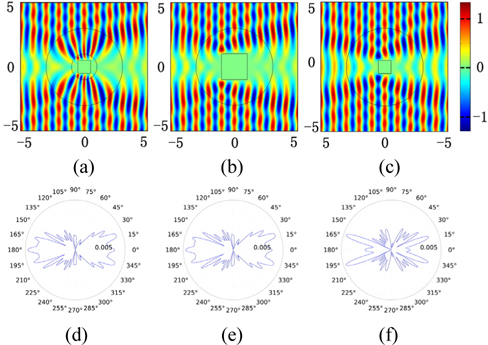



Since transformation optics was proposed by J. B. Pendry in 2006 [1, 2], it has attracted enormous interest in exploring various devices. In the past few years, transformation optics has been proved to be a powerful technique to arbitrarily control electromagnetic fields. The basic idea of transformation optics is that the Maxwell equations remain forminvariant under coordinate transformations. The result of a certain transformation is a direct link between the permittivity and permeability of the material in different coordinate systems. And the metric tensors of the transformed space that contains the desired electromagnetic properties can also be derived simultaneously [3-5]. Transformation optics has become a fundamental tool for exploring a diverse set of devices with novel properties, such as cloaks [6, 7], concentrators [8], lenses [9-12], waveguide bends and transitions [13-17], antennas [18-26], and so on. Generally speaking, the generated materials are inhomogeneous and anisotropic by transformation optics methodology. We can use metamaterial to fabricate the devices. Metamaterial is an artificial material with properties that may not be found in nature, and it gains its properties not from their composition but from their exactingly-designed structures.
In this paper, the transformation optics concept is applied to change the apparent size of a cross section. In order to make the appearance of an object is equivalent to a larger or smaller one, the appropriate transformation function needs to be employed. At the same time, the proper material’s parameters can be gained and the impedances at the inner and the outer boundaries of the device are matched. The results are validated by numerical simulations by using different cross sections.
II. TRANSFORMATION FORMULATIONS
In a space point of view, the transformation optics technology consists in compressing or expanding a certain space into another region. Firstly, to achieve the aim that the appearance of an object is transformed into a much larger or smaller one, the space around the object is discretized into two different zones. The inner space which is delimited by radius
The transformation formulas in the two regions can be mathematically expressed as follows
and
where
To physically design the proposed device, the permittivity and permeability components in the transformed space have to be expressed in the Cartesian coordinate system. Since the functions are described in cylindrical coordinate systems in original space, the matrix relations between cylindrical and Cartesian coordinates are used.
The Jacobean matrix representing the relations between different coordination systems is defined as
If the original space is vacuum, the coefficient of the material can be written as
Taking Equation (1) to Eqs. (3) and (4), the relative permittivity and the relative permeability tensors of the materials in the transformed regions can be obtained. They are expressed as
and
where . These parameters are relatively simple for the transformation in the inner zone since it leads to constant values.
Here a quadrate cross section is taken for example and a finite-element method is used to perform simulations of the transformation presented above. The validation of the design is performed in a two-dimensional configuration and a z-polarized TE wave (parallel to the z-axis) is incident. The frequency of the incident wave is set at 3 GHz.
With all the material parameters above, the functionality of the device is examined. In order to verify the conclusion, the calculation with the compression factor of
Furthermore, if the inner region in the original space is expanded, the opposite conclusion can be drawn. To verify the design mentioned, the geometry structure parameters are set to be
In order to further verify the performance of the proposed device, the scattering pattern of a cross section with
Overall, the above results show that the apparent size of a cross section is indeed changed by expanding or compressing the space around the cross section. Therefore, it can be concluded that the method of transformation optics can generate the performance to change the apparent size of an object.
In summary, transformation optics methodology is based on the form invariance of Maxwell’s equations under coordinate transformations, and it provides an extremely versatile set of design tools by employing special-coordinate transformations, where the compression or dilation of space in different coordinate directions is interpreted as appropriate scaling of the parameters. The appearance of an object can be changed with the transformation electromagnetics methodology.
The important step of the methodology in this paper is determining what transformation functions will be applied to obtain the permittivity and permeability tensors of the device. In the concept mentioned in this paper, two linear transformations are used and an artificial shell is designed which makes the appearance of the cross section bigger or smaller. As we all know, the initial and most well-known application of the transformation optics methodology is the invisibility cloak, and the device designed in this paper will be an invisibility cloak in a limited case. Numerical simulations have been shown to confirm the operating principle of the transformations and the performance of the cloak. It shows further that the methodology proposed here can be applied to change the scattering of an object in both microwave and optical regimes and to design a cloak.










